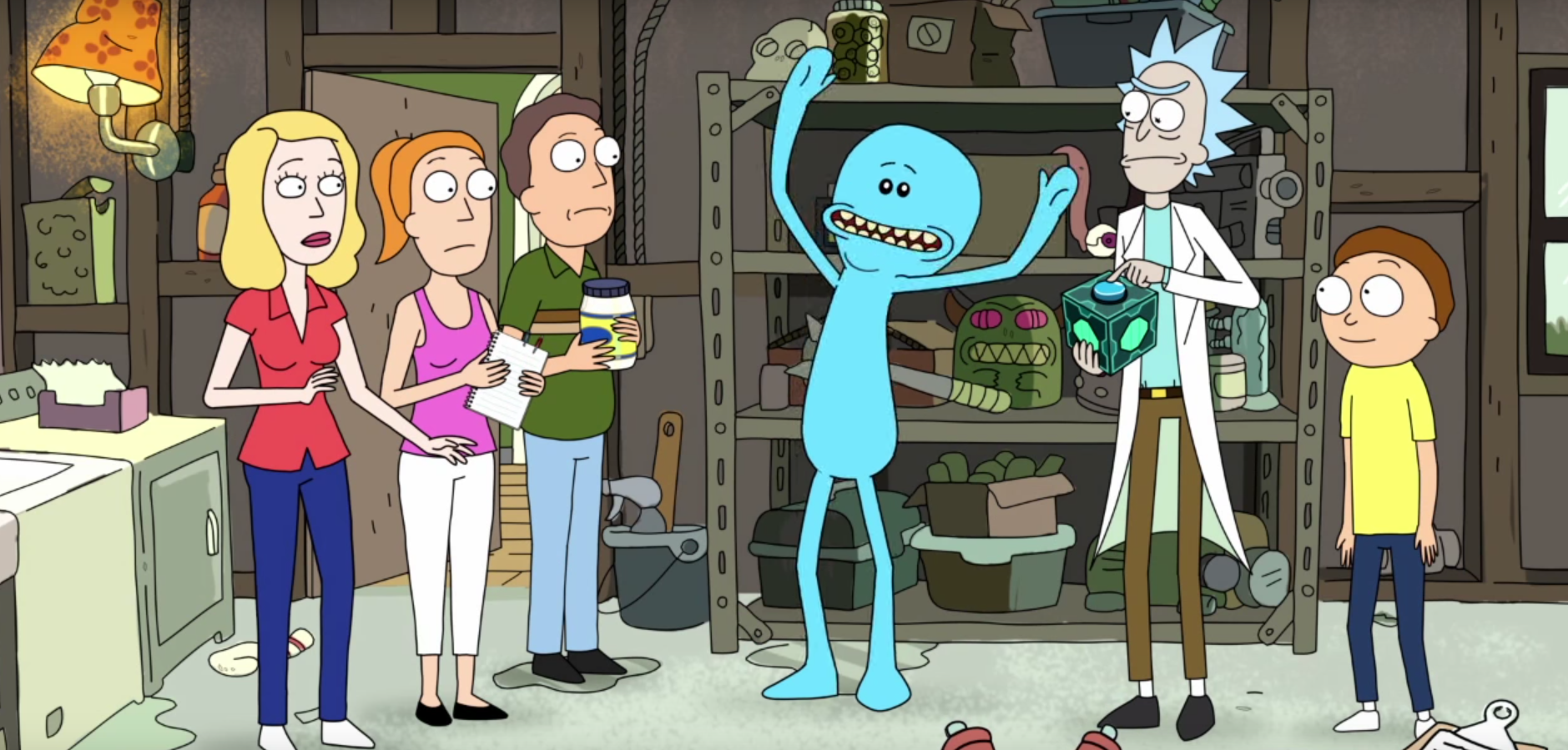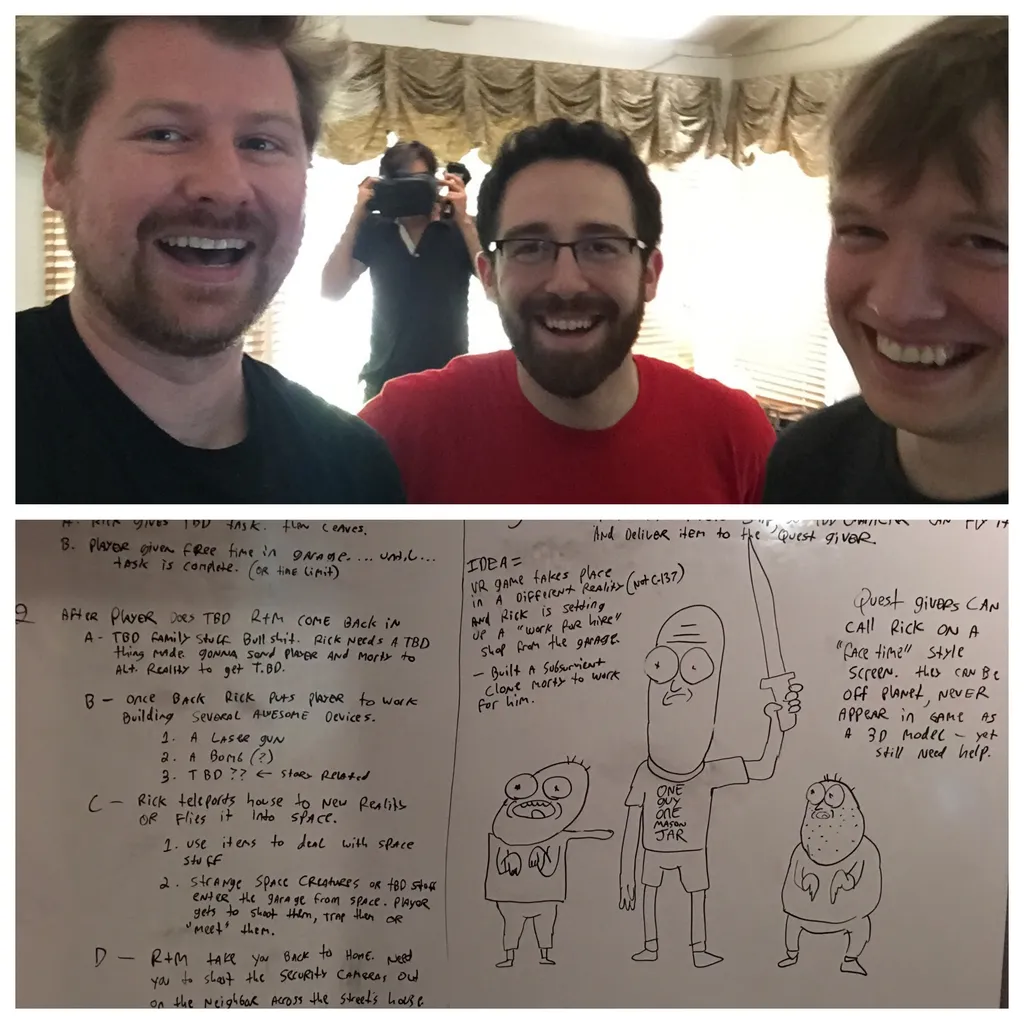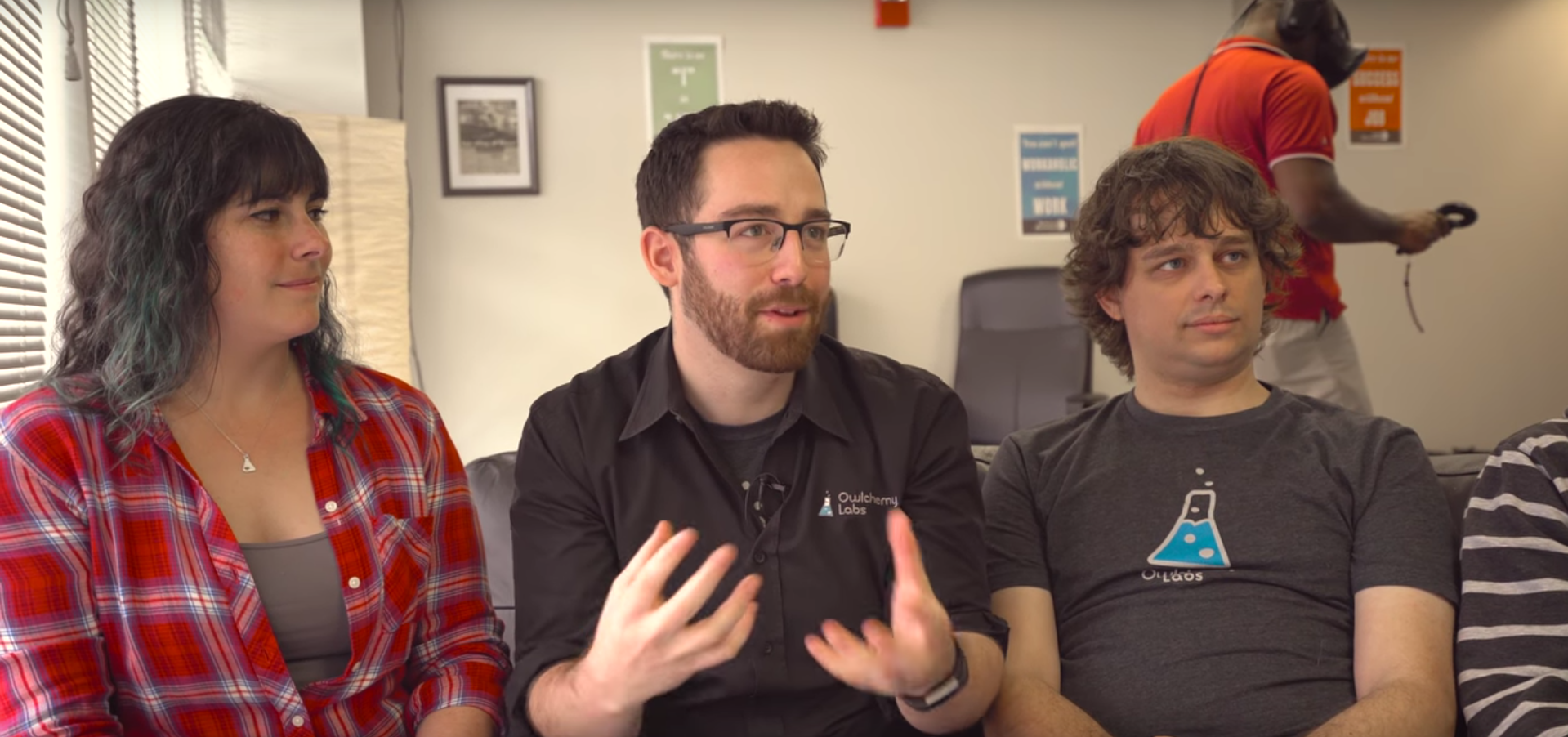As noted in the review for Rick and Morty: Virtual Rick-ality, the game’s developer Owlchemy Labs turned Job Simulator into the unofficial poster child of VR gaming. We gave Job Simulator an 8 out of 10 and, with Rick and Morty receiving an 8.5, Owlchemy finds themselves in a fortunate position once again with a well- developed and received game being attached with an extremely popular (and hilarious) Adult Swim franchise.
With such a pedigree being established at this early stage of virtual reality, one might think every single step is meticulously planned. The opposite is true. Not to say Owlchemy hasn’t done the work to earn this opportunity, but there’s a degree of chaos that played not only into the creation of Rick and Morty VR’s many features, but the creation of the game itself as well.
It All Started With A Tweet
On a calm Sunday in Austin, Texas, the UploadVR team met with a few people from the Owlchemy Labs team: Owlmancer and Studio Director Cy Wise, CEO and Janitor Alex Schwartz, Producer/Developer and alleged certified adult, Andrew Eiche, and CTO (Chief Technical Owl) Devin Reimer. The crew spoke excitedly about the development of the game, from scrapped ideas that eventually returned to making sure the humor landed. The Rick and Morty cartoon’s humor combined with the gameplay of Job Simulator is a perfect fit, but the marriage came together through a Twitter connection.
“Justin Roiland [the co-creator of and title character voice actor for Rick and Morty] had access to early VR hardware back in the early days and was tweeting wildly about Job Simulator being his favorite thing he’d ever played and was going nuts on Twitter,” Schwartz recalls. “[We] love the cartoon, Rick and Morty. It was all this perfect confluence so [I] had to tweet back at him.”
I can’t not wait for more levels!! Haha. Job sim is so much fun! https://t.co/euBqO3MT74
— Justin Roiland (@JustinRoiland) September 11, 2015
A few weeks later, Schwartz and a couple others on the team ended up at Roiland’s place in Hollywood eating Indian food and playing Job Simulator, which organically led to “What if Rick and Morty were in Job Simulator?” or “What if Job Simulator were in the Rick and Morty universe?” Only a week and a half later they were at Adult Swim’s headquarters with the one-line pitch. Within a couple weeks they were signing contracts and building the game.
We reached out to Roiland over the phone after our meeting with Owlchemy and he was able to fill in the gaps on how this all went down.
“To get the ball rolling, first I reached out to Jeff Olsen at Adult Swim Games and ran it by him,” Roiland says. “The plan for the pitch was to fly to Atlanta, get Mike Lazzo from Adult Swim in a Vive. We did and he absolutely flipped out. I also brought Dan Harmon, the co-creator of Rick and Morty, to that pitch, we wanted full firepower. We just pitched it and he just had a blast with the concept. When he came out, we gave him a rough idea for the game. Alex came prepared with the concept (you’re gonna be a Morty clone) I pushed back a bit at first, asking what if maybe you were a Meseeks for example instead? But we didn’t want to have to try and explain what it’s like inside of a Meseeks box, it just made it too complicated. His pitch was the better idea. You could die a bunch and come back, which was funny.”

While the Mr. Meeseeks idea was scrapped they did end up creating the Youseeks assistant that mirrors your movement, one of the coolest parts of the final game. It’s pretty nice seeing such an element of the cartoon brought to life, but that transition from cartoon to 3D in a virtual space took some work.
“We got away with floating robots in Job Simulator and now we had to have fully rigged, fully animated and lipsynced bipedal characters who are moving naturally but are a cartoon,” Schwartz explains. “You don’t want that uncanny valley and so we spent so many months on a character pipeline on figuring out how they can deliver lines, how they can get in your space, how you can kind of go back and forth with a character having it seem realistic without getting into kind of weird territory.”
That “weird territory” is definitely something they had to keep in mind when working on the non-playable character’s eyes. In VR users are ducking and moving around pretty erratically so you have to have the NPCs respond to it naturally.
Terrifying *brrp* Creative Freedom
Considering they’re working with a well-known license from a huge company in Adult Swim, you’d think they’d have to adhere to strict guidelines. They didn’t.
“It was actually surprising, for a big IP like this, how much creative control they gave us,” Schwartz says.”It was really an honor to be working on a thing that we loved.”
The team essentially had open communication with Adult Swim. They’d work on dialogue and character design and, if it was funny and worked, it was approved. It served as a better workflow as opposed to taking tiny steps, awaiting approval, and constantly going back and forth in that way. Being handed such creative control had to be a relaxing process right?
“That was terrifying,” Andrew Eiche immediately says, sparking laughter and agreement from the rest of the team. That freedom wasn’t taken lightly either and Eiche later adds that “almost every single item in the game has something it accomplishes, has some joke, or was in the show and we had to include it.”
“We’re about 50/50 on being able to predict whether something will even be good, like sometimes we’re like this is going to be terrible but we’ll try and it turns out great,” Eiche remarks. One particular creation that’s a big hit with Roiland is the Roy: A Life Well Lived knockoff called Troy.
“They knew they wanted to do Troy from the very start and it’s all voiced by one guy,” says Roiland. “It’s a brilliant branching tree. I’ve played it so many times and I keep finding new stuff. They crammed in so much stuff it’s crazy.”
Troy is an example of an idea that was a hit from inception but there definitely were ideas shot into the wastebasket. One particular idea was cut and brought back later on as the team realized it completely solved their pacing problems for the game: The watch.
“That’s our ticket system,” Schwartz says referring to the feature in Job Simulator that signaled your move to the next task. In Rick and Morty, you look at the watch on your hand to answer a call from Rick or call him to let him know you’re ready to move on.
“The other thing that happens is we’ll hear someone try to do something in play testing and they’ll be disappointed,” says Eiche. “Then we hit this kind of wall where like OK, how do we solve this problem? And it either ends up being we have to account for it or we have to make a joke.”
“Yeah, that’s the Job Simulator conundrum. That’s how we came up with half of the weirdness,” Schwartz adds.
What is the stupidest thing in the game?
The interview was shoved off the rails when this question was asked. When things settled down, though, the general consensus was poop. The game includes a combinator tool that lets you combine various items in the game to make new creations. You also retrieve a piece of poop in the game. So naturally these two elements play together and this poop can be modified into poop hybrids.
Rick and Morty: Virtual Rick-ality is available for HTC Vive and Oculus Rift. You can purchase it on Steam or Oculus Home and declare the “stupidest thing” for yourself. Keep in mind, there are things that Justin Roiland, the co-creator of Rick and Morty, hasn’t found.
“They’ll put stuff into the game and not tell anybody, not even me, so there is stuff in there that no one has found yet,” Roiland said. “It keeps the game alive for a longer period of time when people are trying to find everything.”
Happy hunting.


























